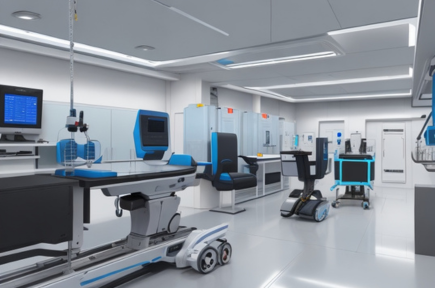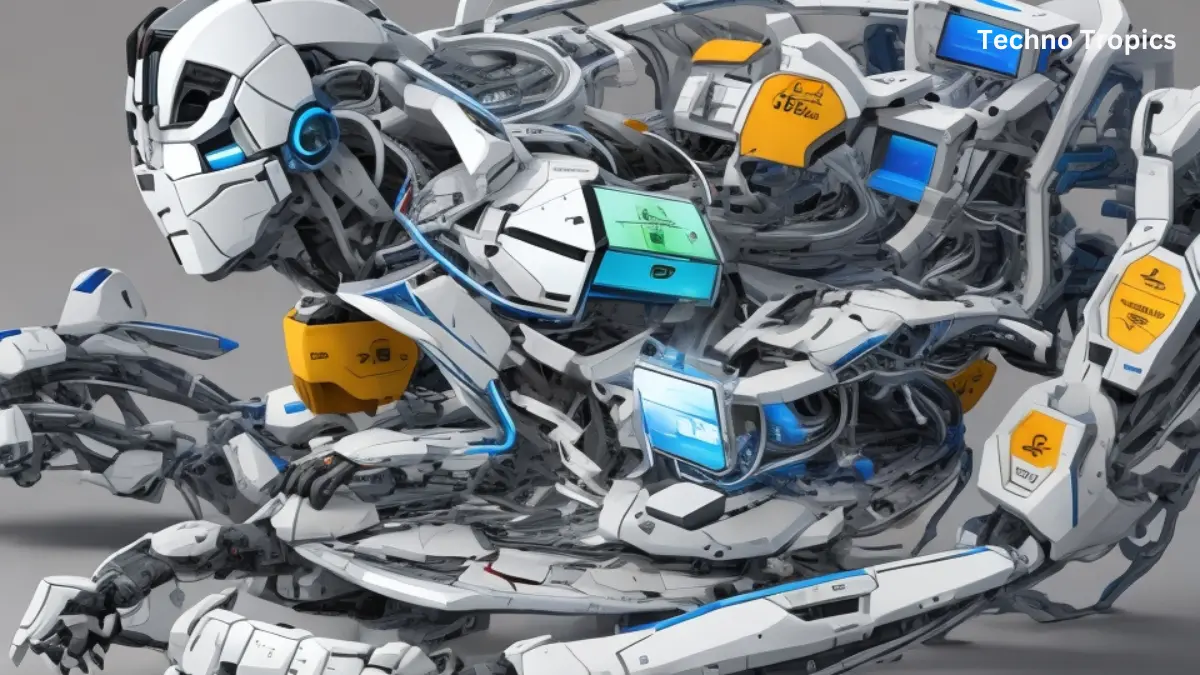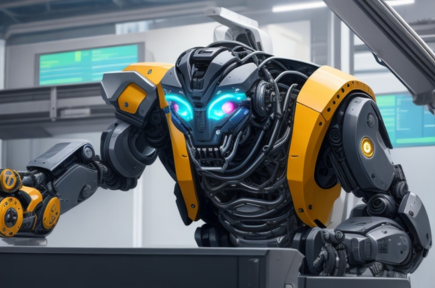In the ever-evolving landscape of healthcare, the integration of artificial intelligence (AI) and robotics has brought about a paradigm shift in the field of surgical equipment.
As technology continues to advance, these innovative tools are redefining the way surgeries are performed, enhancing precision, efficiency, and patient outcomes.
This article explores the transformative impact of AI and robotics on surgical equipment, delving into their applications, benefits, and the potential future developments in this rapidly evolving field.

Evolution of Surgical Equipment
The journey of surgical equipment from traditional tools to AI and robotics-driven devices marks a significant progression in medical technology.
Conventional surgical instruments, while effective, often rely heavily on the skill and experience of the surgeon.
The advent of AI and robotics introduces automation, machine learning, and data analytics into the surgical arena, augmenting the capabilities of healthcare professionals.
Applications of AI in Surgical Equipment
a. Preoperative Planning
AI facilitates detailed preoperative planning by analyzing patient data, medical records, and imaging studies. This assists surgeons in developing personalized surgical plans, optimizing the procedure’s success.
b. Image-Guided Surgery
Integrating AI with robotics enables image-guided surgery, where real-time imaging assists surgeons in navigating complex anatomical structures with unparalleled precision.
c. Robot-Assisted Surgery
Robot-assisted surgical systems, such as the da Vinci Surgical System, have gained prominence. These systems offer enhanced dexterity, allowing surgeons to perform minimally invasive procedures with greater accuracy and control.
Read Also: Unlocking the Power of AI: Top 5 AI Android Apps Revolutionizing Your Smartphone Experience
Robotics in Surgical Equipment
a. Minimally Invasive Surgery
The use of robotics in surgical equipment has revolutionized minimally invasive procedures. Smaller incisions, reduced trauma, and quicker recovery times are some of the advantages offered by robotic-assisted surgery.
b. Telepresence Surgery
With advancements in communication technology, robotic systems enable telepresence surgery, allowing surgeons to perform procedures remotely. This has the potential to expand access to specialized medical care in underserved regions.
c. Autonomous Surgical Robots
Emerging technologies are paving the way for autonomous surgical robots capable of performing certain tasks independently. These robots can collaborate with human surgeons, enhancing overall efficiency in the operating room.
Benefits of AI and Robotics in Surgery
a. Precision and Accuracy
AI and robotics enhance precision in surgery, minimizing the risk of errors and improving overall accuracy. This is particularly crucial in delicate procedures where precision is paramount.
b. Reduced Recovery Time
Minimally invasive surgeries facilitated by robotic systems often result in shorter recovery times for patients, reducing hospital stays and healthcare costs.
c. Improved Patient Outcomes
The integration of AI and robotics contributes to improved patient outcomes by reducing complications, enhancing recovery, and minimizing the likelihood of postoperative issues.
Challenges and Considerations
a. Cost Implications
The initial investment and ongoing maintenance costs associated with AI and robotic surgical systems can be a barrier to widespread adoption, especially in resource-limited healthcare settings.
b. Training and Learning Curve
Surgeons and healthcare professionals need specialized training to operate AI-driven surgical equipment. Overcoming the learning curve is essential for maximizing the benefits of these technologies.
c. Ethical and Legal Concerns
As AI and robotics become integral to healthcare, ethical considerations regarding patient consent, data security, and liability in case of system errors must be carefully addressed.
Future Developments
a. AI-Augmented Decision Support:
Future developments may involve the integration of AI as a decision support system, providing real-time insights and recommendations to surgeons during procedures.
b. Enhanced Connectivity:
Improved connectivity between surgical devices and AI platforms can foster seamless data exchange, further optimizing surgical workflows and patient care.
c. Personalized Medicine:
AI and robotics may contribute to the advancement of personalized medicine, tailoring surgical approaches based on individual patient characteristics, genetics, and medical histories.
Conclusion
The marriage of AI and robotics with surgical equipment heralds a new era in healthcare, promising unprecedented advancements in surgical precision, patient outcomes, and overall efficiency.
As these technologies continue to evolve, it is imperative for healthcare professionals, policymakers, and industry stakeholders to collaborate in addressing challenges and ensuring equitable access to these cutting-edge tools.
The future of surgical equipment lies at the intersection of human expertise and technological innovation, paving the way for a more sophisticated, interconnected, and patient-centric healthcare landscape.
Disclaimer: This article is for informational purposes only. The content provided is based on general knowledge and internet information, and readers are advised to seek professional advice for specific situations. The author and publisher do not assume any responsibility for the accuracy or completeness of the information presented. Any reliance on the information provided in this article is at the reader’s own risk.


